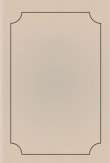أنت هنا
قراءة كتاب Ducks at a Distance: A Waterfowl Identification Guide
تنويه: تعرض هنا نبذة من اول ١٠ صفحات فقط من الكتاب الالكتروني، لقراءة الكتاب كاملا اضغط على الزر “اشتر الآن"
src="@public@vhost@g@gutenberg@html@files@18884@18884-h@images@12f.jpg" alt="Typical Flock Pattern" title="Typical Flock Pattern" tag="{http://www.w3.org/1999/xhtml}img"/> Typical Flock Pattern
Black Duck
Length—24 in.
Weight—2¾ lbs.
 Drake
Drake Similar Sexes
Similar Sexes Typical Flock Pattern
Typical Flock PatternA bird of the eastern States, primarily the Atlantic Flyway and, to a lesser extent, the Mississippi.
Shy and wary, regarded as the wariest of all ducks.
Often seen in company of mallards, but along the Atlantic coast frequents the salt marshes and ocean much more than mallards.
Flight is swift, usually in small flocks.
White wing lining in contrast to very dark body plumage is a good identification clue.
The hen's quack and the drake's kwek-kwek are duplicates of the mallards.
 Hen Drake
Hen DrakeDiving Ducks
Diving ducks frequent the larger, deeper lakes and rivers, and coastal bays and inlets.
The colored wing patches of these birds lack the brilliance of the speculums of puddle ducks. Since many of them have short tails, their huge, paddle feet may be used as rudders in flight, and are often visible on flying birds. When launching into flight, most of this group patter along the water before becoming airborne.
They feed by diving, often to considerable depths. To escape danger, they can travel great distances underwater, emerging only enough to show their head before submerging again.
Their diets of fish, shellfish, mollusks, and aquatic plants make them second choice, as a group, for sportsmen. Canvasbacks and redheads fattened on eel grass or wild celery are notable exceptions.
Since their wings are smaller in proportion to the size and weight of their bodies, they have a more rapid wingbeat than puddle ducks.
 Feeding Landing
Feeding LandingCanvasback
Length—22 in.
Weight—3 lbs.
 Eclipse Drake
Eclipse DrakeNormally late to start south, canvasbacks migrate in lines and irregular V's.
In feeding areas, compact flocks fly in indefinite formations. Their wingbeat is rapid and noisy; their speed is the swiftest of all our ducks.
 Hen Drake
Hen Drake Drake
Drake Hen
Hen Hen
HenFeeding behavior is highly variable. In some areas they feed at night and spend the day rafted up in open waters; in other areas they feed inshore mornings and evenings.
On the water, body size and head shape distinguish them from scaups and redheads.
Drakes croak, peep, and growl; hens have a mallard-like quack.
 Typical Flock Pattern
Typical Flock PatternRedheads
Length—20 in.
Weight—2½ lbs.
 Hen
HenRange coast to coast, with the largest numbers in the Central Flyway. Migratory flocks travel in V's; move in irregular formations over feeding areas. Often found associating with canvasback.
In the air, they give the impression of always being in a hurry.
 Hen Drake
Hen Drake Drake
Drake Hen
Hen Hen
HenUsually spend the day in large rafts in deep water; feed morning and evening in shallower sections.
Drakes purr and meow; hens have a loud squak, higher than a hen mallard's.
 Typical Flock Pattern
Typical Flock PatternRingneck
Length—17 in.
Weight—2½ lbs.




